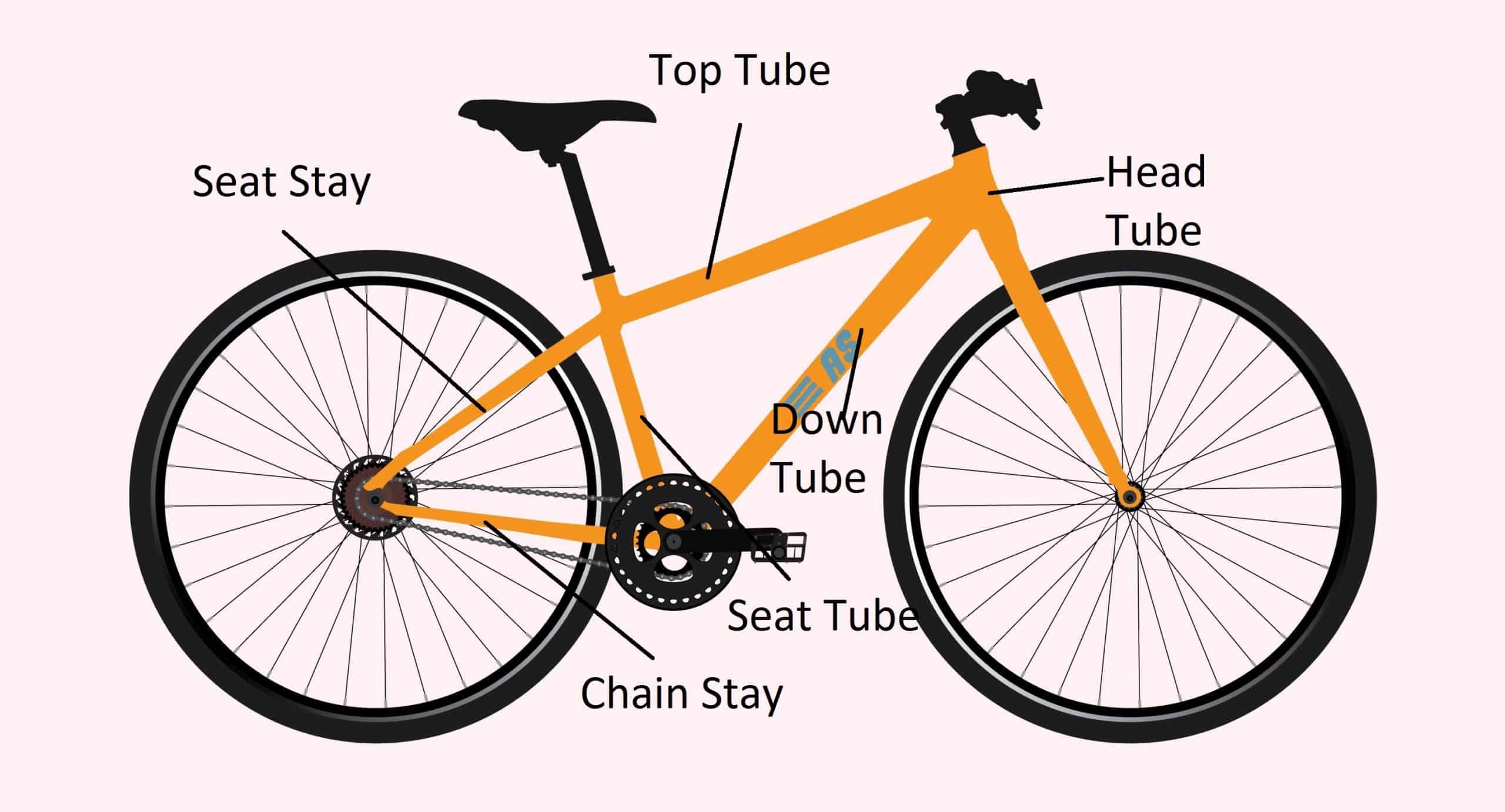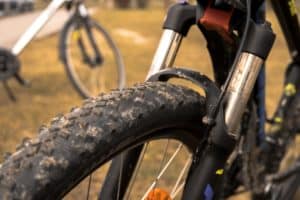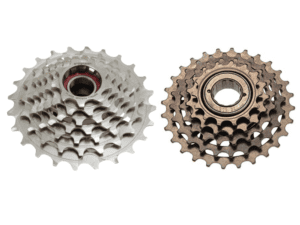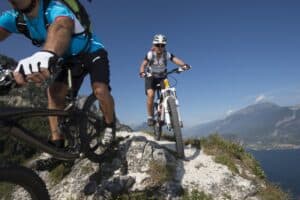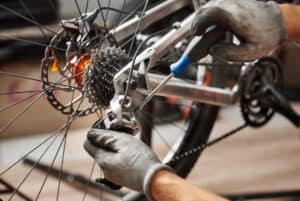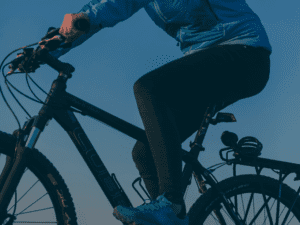Frames are one of the most important components of any bike. They determine how long your bike will last, the comfort, etc. And thus, it is important that you know all about them.
And this article, that’s exactly what we are going to cover so if you are looking to buy a new bike, stay tuned.
Bike Frame Parts You Need To Know About
Head Tube
The head gets the first attention in most cases. A bike frame has a head tube, the front part of the frame pointing downwards towards the front. It’s the part that holds the forks, which hold the wheel, and connects them with the handlebars.
The headtube contains a headset which is a set of bearings that provide smooth steering of the front wheel. The head tube also shows the bike’s brand icon just below the stem. Your head tube comes with a tapered or straight steerer headset.
Most of the modern road and mountain bikes come with a tapered headset. You can tell by how the headtube is shaped. A straight one has a straight tube, but the tapered one has a triangular-like head tube. Modern mountain bikes also have a slacker head tube angle.
Top Tube/Cross Bar
The top tube is the top part of the bike that stretches from below the stem to your seat post. Other people call it the crossbar.
It’s the part of your bike that you step over before you start pedaling your bike. In some cases, it runs parallel to the ground, but in most MTBs, it’s angled according to the size of the bike and the design a brand prides itself with.
A “Small” size frame has the top tube much lower, while the same is higher in an “XL” frame. In some bikes, the top tube hosts the rear brake’s and drivetrain mechanism cables and hoses. For some full-suspension bikes, the top tube holds the front end of the rear shock.
Down Tube
The down tube is the thickest and widest part of the frame. It could be because it carries the heaviest load or the most stressed part of the frame. It runs from the head tube to the bottom bracket tube, where it meets the seat tube.
The down tube has eyelets that hold your water bottle cage. Most modern MTBs come with internally routed shifting and braking cables going through the down tube. It’s also where you find the brand’s full title, for example, “Trek.”
Seat Tube
As the name suggests, this is the part of the bike that holds your seat to place. The tube starts at the top of the rear edge of the top tube and runs down to the top of the bottom bracket. The bracket serves as the junction between the downtube, seat tube, and the chainstay.
The alloy or carbon seat post goes into the seat tube and is held by the seat clump or a hinged seat tube. The height of the saddle is decreased by inserting the seat post further into the seat tube. The seat tube also acts as the junction between the top tube and the seat stay.
For older bikes with a 3x and 2x system, the seat tube holds the front derailleur. It also holds one bottle cage for bikes that have a pair of bottle cages. Lastly, some traditional seat tubes come with a cable routing system for dropper seat posts cables. Modern MTBs also have noticeably slacker seat tube angles.
Chain Stays
Don’t judge the chain-stays by their thinness. They are tougher than you think. The thinner tubes run almost parallel to the ground, from the rear of the bottom bracket to either side of the rear wheel’s axle.
They are thin because they are thinner to provide enough room for the rear wheel and the tire. The right side chain stay runs alongside the bike’s chain.
It also hosts the rear derailleur shifting cable. The left one hosts the rear brake’s hydraulic hose that assists withs stopping the rear wheel.
For a full-suspension mountain bike, the chainstay has a pivot just behind the bottom bracket to offer flexibility. Some bigger brands, such as Bold Cycles, now owned by Scott bikes, developed a technology that makes chainstays flex like a bow.
Seat Stay
Lastly, we have the seat stay. The seat stay and the chain stay make up the rear triangle subframe. The seat stay comprises two thinner tubes running from the rear wheel axle to the top of the seat tube.
For some full-suspension bikes, the style of seat stay is different. It does not directly or make contact with the seat tube but with a pivot system.
The seat stay has two posterior triangle dropouts which end on both sides of the rear wheel axle. There’s a style of seat stay that holds the rear brakes, common in older bikes. Some bikes have their panniers sitting on the seat stay with the rears held by eyelets just close to the rear axle.
Wrapping Up
By now, you already have the whole image of a bike frame in your mind and all its parts. All of them have crucial roles.
If you have any questions or noticed that we left something out, go ahead and engage us. We will try to help as much as we can.
